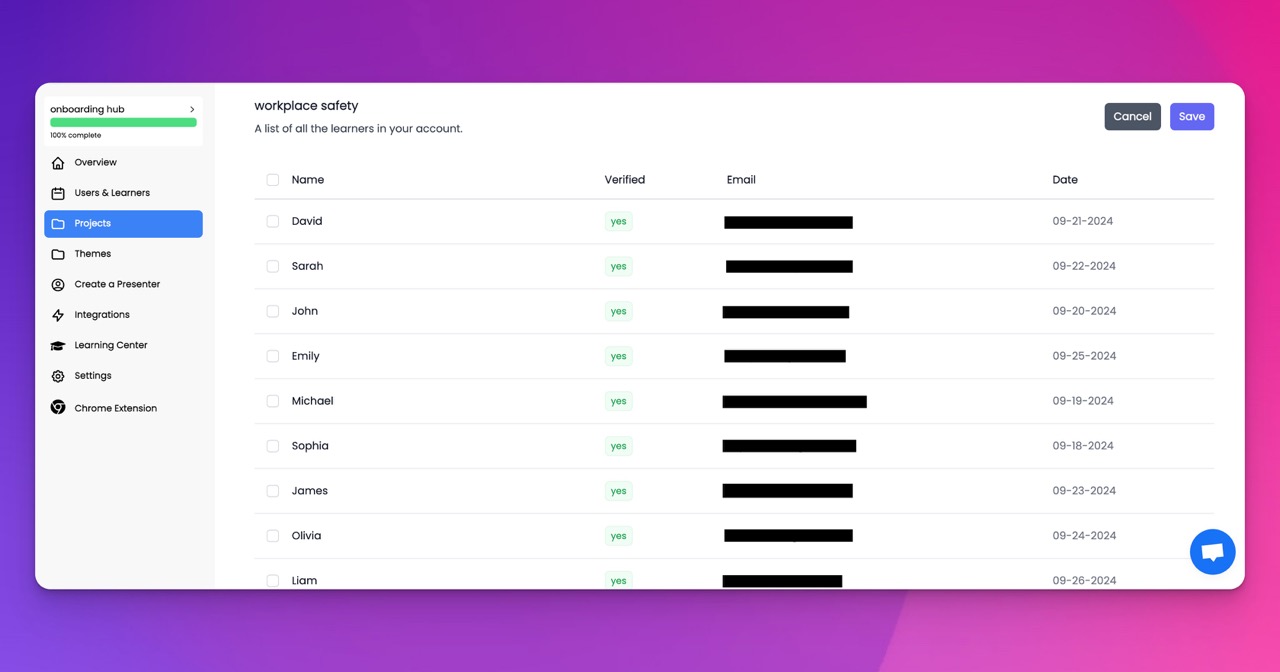🎉 Trainday now integrates with Zendesk and Hubspot 🎉 Trainday now integrates with Zendesk and Hubspot 🎉 Trainday now integrates with Zendesk and Hubspot
🎉 Trainday now integrates with Zendesk and Hubspot
🎉 Trainday now integrates with Zendesk and Hubspot
Contact
Innovative Approaches to Train Underwriters Quickly
In the competitive world of finance, the role of an underwriter is pivotal, requiring a blend of analytical skills, attention to detail, and a deep understanding of risk assessment. Traditional training methods can be lengthy and may not always keep pace with the evolving industry standards and regulatory requirements. To address these challenges, financial institutions are increasingly adopting innovative approaches to train underwriters quickly and effectively. This blog post explores various modern training techniques and technologies that can expedite the training process, ensuring underwriters are well-prepared to excel in their roles.
The Challenges of Traditional Underwriting Training
Traditional underwriting training methods face several obstacles that can hinder efficiency and effectiveness:
Lengthy Training Durations
The complexity of underwriting requires extensive training periods, delaying new underwriters' ability to contribute effectively.
Inconsistent Training Quality
Manual training methods can lead to variations in the quality of instruction, resulting in inconsistent levels of competency among trainees.
Information Overload
Underwriters need to assimilate a vast amount of information, including financial analysis, regulatory requirements, and risk management strategies, which can be overwhelming and difficult to retain.
Innovative Training Approaches
Adopting modern training techniques and technologies can significantly accelerate the learning process for new underwriters. Here are some effective strategies:
AI-Powered Personalized Learning
AI-powered training platforms can create personalized learning paths for each trainee based on their strengths, weaknesses, and learning styles. These platforms can adapt to the individual needs of underwriters, providing targeted instruction that helps them grasp complex concepts more quickly.
Interactive E-Learning Modules
Interactive e-learning modules, including videos, quizzes, and simulations, can make training more engaging and effective. These modules allow trainees to learn at their own pace and revisit challenging topics as needed, enhancing retention and understanding.
Virtual Reality (VR) Simulations
VR technology can immerse trainees in realistic underwriting scenarios, allowing them to practice decision-making and risk assessment in a controlled, virtual environment. This hands-on experience can accelerate learning by providing practical application of theoretical knowledge.
Real-Time Feedback and Analytics
Incorporating real-time feedback and analytics into training programs can help underwriters quickly identify and correct mistakes. This immediate feedback loop enhances learning and ensures a deeper understanding of underwriting principles.
Gamification
Gamifying the training process can make learning more enjoyable and motivate trainees to engage more deeply with the material. Leaderboards, badges, and rewards can incentivize underwriters to complete training modules and achieve high levels of competency.
Benefits of Innovative Training Approaches
Implementing innovative training methods for underwriters offers several significant benefits:
Reduced Training Time
Modern training techniques can significantly reduce the time required to train new underwriters, enabling them to become productive more quickly.
Enhanced Accuracy and Consistency
AI-powered and interactive training solutions ensure that all trainees receive high-quality, consistent instruction, reducing the risk of errors and enhancing the accuracy of underwriting assessments.
Improved Knowledge Retention
Personalized learning paths, interactive modules, and real-time feedback help trainees retain information more effectively, leading to better long-term performance.
Scalability
Advanced training platforms can easily scale to accommodate large numbers of trainees without compromising on the quality of instruction, making them ideal for growing financial institutions.
Implementing Innovative Training Programs
To successfully integrate innovative training methods into your underwriting training program, consider the following steps:
Assess Training Needs
Begin by assessing the specific training needs of your underwriting team. Identify the areas where innovative training techniques can provide the most significant benefits, such as financial analysis, regulatory compliance, or risk assessment.
Choose the Right Training Platforms
Select training platforms that align with your training goals and objectives. Look for features such as AI-powered personalization, interactive modules, VR simulations, and real-time feedback.
Develop a Comprehensive Training Plan
Create a comprehensive training plan that incorporates innovative training methods alongside traditional approaches, if necessary. This hybrid approach ensures a balanced and effective learning experience for trainees.
Monitor and Evaluate
Continuously monitor the effectiveness of your innovative training program. Collect feedback from trainees and assess their performance to identify areas for improvement and make necessary adjustments.
Conclusion
"Innovative Approaches to Train Underwriters Quickly" highlights the transformative potential of modern training techniques in the financial sector. By leveraging AI-powered personalized learning, interactive e-learning modules, VR simulations, real-time feedback, and gamification, financial institutions can significantly reduce training time, enhance accuracy, and streamline the underwriting process. Embracing these innovative training solutions ensures that underwriters are well-prepared to meet the demands of their roles quickly and effectively, ultimately contributing to the overall success and efficiency of the organization.
Accelerate Compliance.
Deliver OSHA-Ready Courses Instantly.
Empower your team with data-driven training solutions tailored to your industry's safety standards. Stay compliant, reduce risks, and boost productivity with AI-powered course creation.
